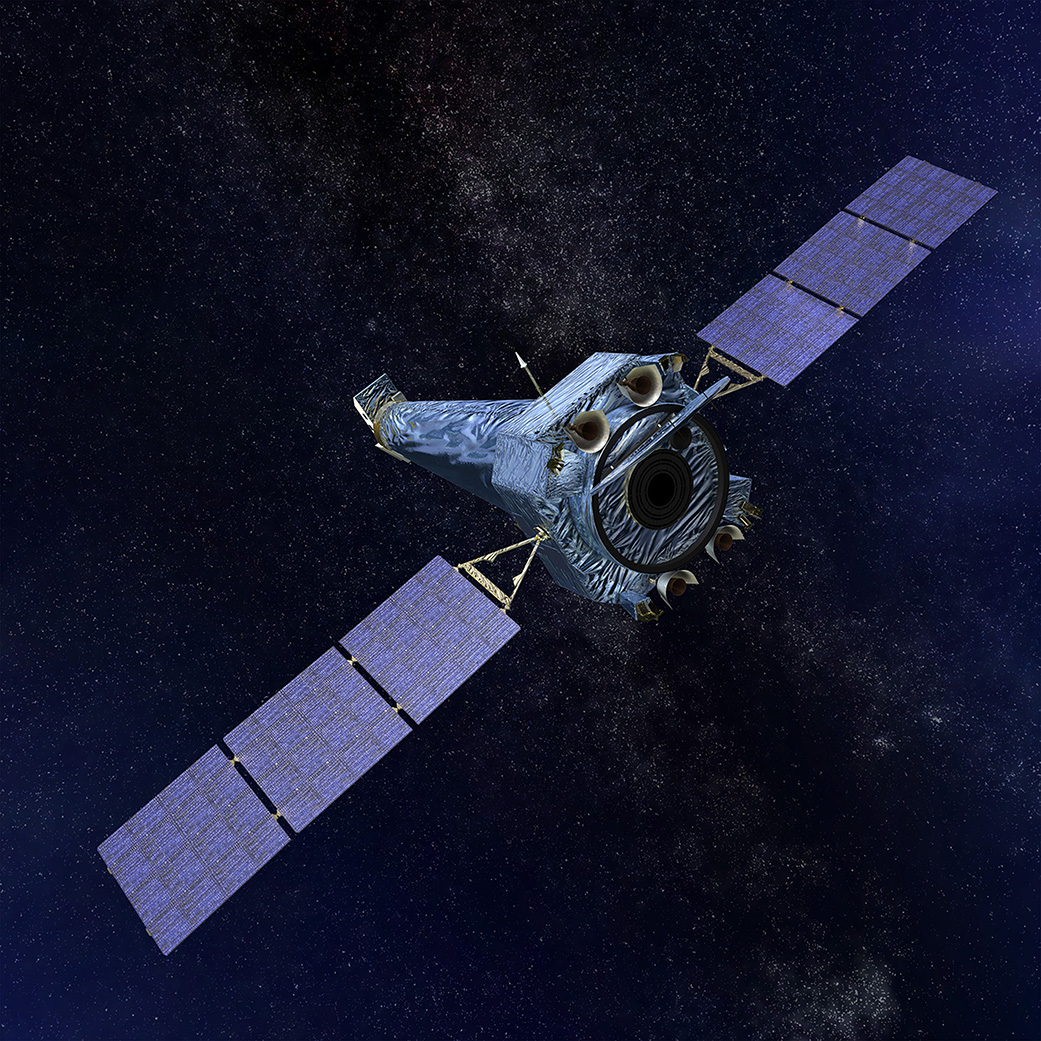
A flagship NASA space telescope remains on course to return to action next week.
A balky orientation-maintaining gyroscope sent the Chandra X-ray Observatory, which has been observing the heavens in high-energy light since 1999, into a protective "safe mode" on Oct. 10. But that problem is nearly solved, mission team members said today (Oct. 19).
"The Flight Operations Team has completed testing and simulation of the procedures and onboard software updates that will place Chandra into a new gyroscope configuration, with the gyroscope that caused the Oct. 10 safe mode in reserve," Chandra team members said today (Oct. 10) via the mission's Twitter account, @chandraxay. [Our X-Ray Universe: Amazing Photos by NASA's Chandra X-Ray Observatory]
"The switch is scheduled for Friday night (tonight) and will be followed by a period of collecting maneuver data to validate and calibrate the new configuration prior to resuming science observing, planned for early next week," the team added.
Chandra is one of four space telescopes NASA launched to Earth orbit from 1990 to 2003 via the agency's Great Observatories program. Two of the other three, the Hubble and Spitzer space telescopes, remain active as well. The fourth, the Compton Gamma Ray Observatory, was intentionally deorbited in 2000 after a gyroscope on the telescope conked out.
Hubble went into safe mode on Oct. 5 after suffering a gyro failure of its own. That iconic scope carries six gyroscopes and needs three functional ones to operate with maximum efficiency. Three Hubble gyros have now failed, and one that team members were hoping to recruit as a backup hasn't been behaving itself.
But NASA officials have expressed confidence that Hubble will resume its science work soon, even if the backup gyro continues to falter. Hubble can operate in one-gyro mode if needed, with another gyro kept in reserve as a backup, mission team members have said.
Get the Space.com Newsletter
Breaking space news, the latest updates on rocket launches, skywatching events and more!
Mike Wall's book about the search for alien life, "Out There," will be published on Nov. 13 by Grand Central Publishing. Follow him on Twitter @michaeldwall. Follow us @Spacedotcom or Facebook. Originally published on Space.com.
Join our Space Forums to keep talking space on the latest missions, night sky and more! And if you have a news tip, correction or comment, let us know at: community@space.com.

Michael Wall is a Senior Space Writer with Space.com and joined the team in 2010. He primarily covers exoplanets, spaceflight and military space, but has been known to dabble in the space art beat. His book about the search for alien life, "Out There," was published on Nov. 13, 2018. Before becoming a science writer, Michael worked as a herpetologist and wildlife biologist. He has a Ph.D. in evolutionary biology from the University of Sydney, Australia, a bachelor's degree from the University of Arizona, and a graduate certificate in science writing from the University of California, Santa Cruz. To find out what his latest project is, you can follow Michael on Twitter.









